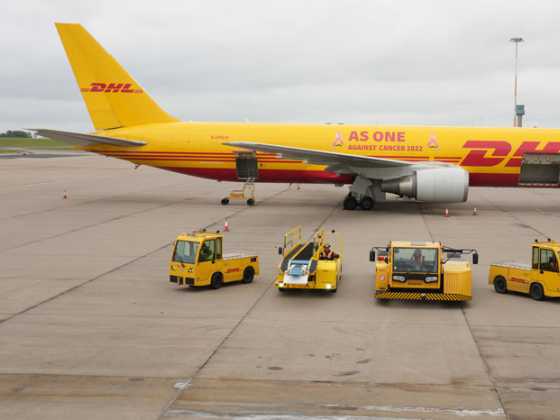Green inspiration at Arrive‘n’Drive

GreenFleet Arrive‘n’Drive showcased the latest in zero and ultra-low emission vehicles and alternatively-fuelled trucks, giving fleets an insight into a cleaner transport future
On 27 September, Rockingham Motor Speedway hosted GreenFleet Arrive’n’Drive, showcasing the latest in ultra‑low emission vehicles and technology.
The event, powered by Centrica, attracted fleet and transport managers looking for ways to save on fuel consumption, reduce emissions, and transition to a zero and ultra-low emission fleet.
Delegates had the opportunity to test drive the latest electric, hybrid and alternatively fuelled vehicles around Rockingham’s iconic track, as well as hear from industry experts on the topics affecting the fleet industry.
Workshops
The government’s Road to Zero strategy says it wants ‘one of the best electric vehicle infrastructure networks in the world’. To achieve this, there are proposals to put chargepoints in newly built homes and integrated into lampposts. The strategy talks of trialing wireless charging and also promises a £400 million Charging Infrastructure Investment Fund to support companies that produce and install charge points.
One of the biggest complaints about the UK charging infrastructure, aside for the limited number of charge points, is that it can be difficult and inconvenient for drivers to use. This is because there are different costs, payment and access methods for different points, and the networks are not interoperable.
To address this, the Automated and Electric Vehicles Bill aims to ensure chargepoints can be easily accessed and used, available at motorway service areas and large fuel retailers, and will be smart ready.
To examine the current electric vehicle charging network, Arrive‘n’Drive hosted the EV Recharging & Infrastructure workshop.
Jonathan Tudor from Centrica Innovations discussed its electric charging solutions for businesses and Chris Cox from Cenex discuss the current challenges and solutions of charging an electric vehicle.
Greening commercials
Uncertainty over air quality plans is putting a question mark over the future of diesel. But for van and truck operators who rely heavily on the fuel, what alternative fuels are out there that are fit for purpose?
Whilst electrification can work for some vans, the size, cargo and long distances that lorries travel make it currently unsuitable.
Natural gas and biomethane however has been proven to be fit for purpose as well as lowering emissions.
By using natural gas, NOx emissions can be reduced by 74 per cent and particulate matter by 96 per cent. Furthermore, if using biomethane, emissions can also be reduced by over 80 per cent.
The Gas Powered Commercial Vehicle Workshop explained how gas can help decarbonise heavy goods vehicles.
Chris Noyce from the Anaerobic Digestion & Bioresources Association (ADBA) spoke about how biogas can be created from a natural process that breaks down organic wastes and purpose-grown crops, which can then be upgraded to biomethane. This can then be used to power gas vehicles, with dramatically less carbon emissions compared to diesel.
Martin Flach, alternative fuels director from IVECO then spoke about its range of gas powered commercial vehicles. This includes the Stralis, which achieved a remarkable 837 mile journey from John O’Groats to Land’s End on a single fill of liquified natural gas, demonstrating that gas vehicles are indeed fit for purpose. With a growing network of gas fuelling stations, this alternative fuel is one that can achieve the green ambitions of commercial vehicle operators.
Forecourt EV Charging
Following from the Automated and Electric Vehicles Bill, which makes it mandatory for motorway services and large fuel forecourts to install EV charge points, this years’ Arrive’n’Drive saw publisher William Reed Business Media join GreenFleet with a conference for the UK’s largest independent fuel forecourt owners.
Chaired by Quentin Willson, the conference explained the implications of the Bill for independent forecourt owners, as well as suggestions on what actions to take.
Delegates then test drove the EVs, many for the first time.
The vehicles
Arrive‘n’Drive allowed delegates to get behind the wheels of some of the latest zero and low emission vehicles.
The Porsche Cayenne E-Hybrid was a test-track sell out. Its three-litre V6 engine combines with an electric engine to generate power of 462 hp and accelerates from 0 to 62mph in 5.0 seconds for a thrilling ride. It can travel up to 27 miles using electric power alone, and CO2 emissions are quoted as 72-78g/km.
Showcasing its progress towards an electrified future, Volvo brought its XC90 T8 for visitors to drive. The plug-in hybrid can travel up to 27 miles on electric power alone and has CO2 emissions of 49g/km. Fuel economy meanwhile is quoted at 135mpg.
Electric vehicle rental company EVison brought a Tesla Model S, which attracted the crowds. Its a mid-size luxury all-electric five-door vehicle with a remarkable range of 335 miles.
Toyota meanwhile brought its Plug-in Prius, which can achieve 30 miles in electric EV mode, and has solar roof panels to help extend the range. There was also a selection of other Toyota and Lexus hybrids available to test drive, to demonstrate the benefits of ‘self charging’ hybrids.
BMW’s new i8 Roadster, which was on static display, drew people in with its iconic sports car design and striking gullwings. It has CO2 emissions of 46 g/km and can drive 33 miles on electric power alone. There was a range of other BMW plug-in hybrids and electric vehicles to test, as well as a selection from MINI, including the plug-in Cooper S E Countryman.
Ford brought its Mondeo hybrid for delegates to drive, as well as the Focus and Fiesta Van. LDV showcased a selection of electric vans, including a caged tipper variant, which can achieve 120 miles on a full charge. Iveco brought its natural-gas powered Stralis truck and Daily electric van for delegates to test, while DAF brought its LF, CF and XF Series, to show commercial vehicle operators how its trucks can run on GTL (Gas to liquid) and HVO (Hydrotreated Vegetable Oil).
Green-Mopeds meanwhile had its own track for visitors to test-drive electric scooters.






